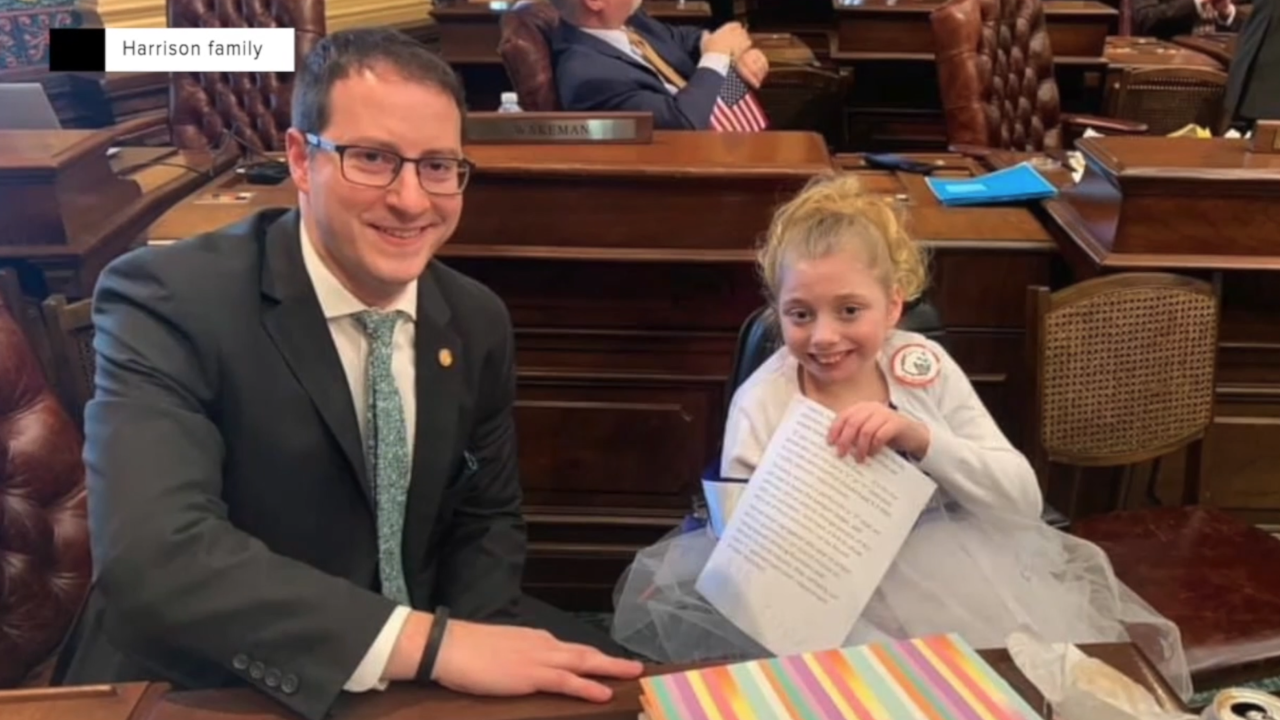Cerebral palsy (CP) is the most common motor disability during childhood, according to the Centers for Disease Control and Prevention (CDC).
Symptoms can vary from having trouble walking to not being able to walk at all. It can make it difficult to navigate public spaces, including schools.
“Sometimes they're going all the way to the other side of the school building just to get to an accessible bathroom or to get to a ramp so that they can then get to the playground or get to the bus,” said Erin Kinsey, a physical therapist with Aurora Public Schools in Colorado.
That’s something 12-year-old Zoey Harrison is trying to change.
She has CP and has been visiting legislators at the Michigan statehouse, hoping to improve things like bathrooms for all people who use a wheelchair.
On her list is changing the height of the sanitary trash inside the stalls of women’s restrooms.
Harrison says with her wheelchair, she often ends up face to face with them.
If she’s in need of a changing table and there isn’t one, Harrison says she ends up on the floor. More family restrooms are also important to her.
“Because when I go out with my dad, my dad can't, I have to go to the boys’ bathroom,” said Harrison.
Something else Harrison wants to see is a website that would help people find restrooms that can accommodate wheelchairs.
She says the idea to start asking lawmakers for help with this all came from a school assignment.
“My teacher, Mrs. Englehart, made us write a paper on how we could change the world and I chose this, and then I started actually doing it,” said Harrison.
Harrison has been attending Michigan’s virtual academy even before other schools went remote due to the pandemic.
Her mom says it has helped Harrison stay on track on days she needs to go to the hospital or has to do an oxygen treatment in the morning. It also eliminates the public space she has to navigate.
While Harrison is on her way to enacting change in Michigan, Kinsey says there are things all communities could consider. Funding for handicap accessible options is a big one.
“Because it is expensive to add these types of accommodations or modifications to buildings, which is a lot of times why we don't see them out in the community, even in schools, you know, we don't have everything we asked for all the time,” said Kinsey.



